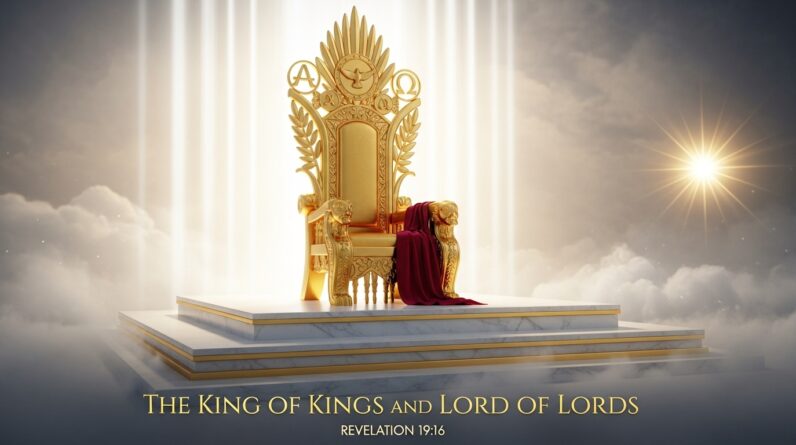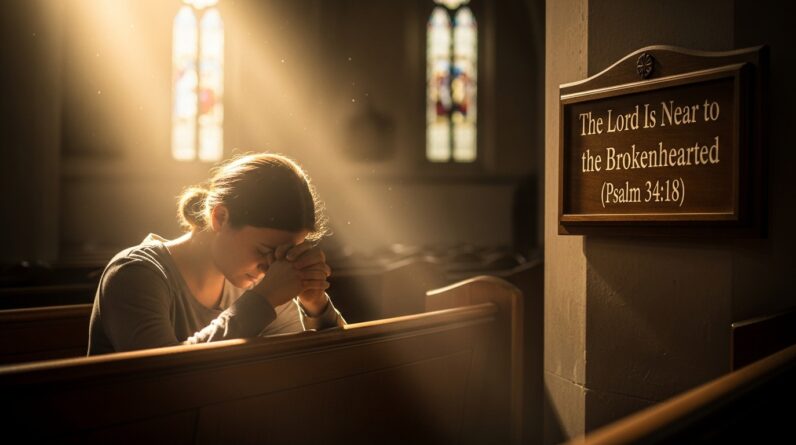Prophetic Visions: Understanding Daniel’s Dream – Daniel 7:13
Imagine peering into the depths of prophetic visions, unraveling the enigmatic dream that unfolded before Daniel’s eyes. In the book of Daniel, chapter 7, verse 13, a captivating vision is described that offers a glimpse into future events. Delve into the intricacies of this prophetic message as you decipher the meaning behind the symbols and unravel the significance they hold.
Within this vision, the imagery weaves a tapestry of mysteries, inviting you to embark on a journey of interpretation. As you navigate through the complexities of Daniel’s dream, you’ll encounter a diverse cast of characters and supernatural elements that paint a vivid picture of what lies ahead. With meticulous attention to detail, let us explore the interplay of symbolism and prophetic insight, illuminating the path towards a deeper understanding of this awe-inspiring vision found in Daniel 7:13.
1. Historical Background
1.1 Babylonian Captivity
During the 6th century BC, the kingdom of Judah experienced a time of turmoil and unrest. The Babylonians, under the rule of King Nebuchadnezzar, laid siege to Jerusalem and eventually conquered the city in 586 BC. This event marked the beginning of the Babylonian Captivity, a period of exile for the Israelites.
1.2 Rise of the Medes and Persians
After the fall of the Babylonian Empire, the Medes and Persians took control of the region. Under the leadership of Cyrus the Great, the Persians allowed the captive Jews to return to their homeland. This marked a significant turning point for the Israelites, as it gave them the opportunity to rebuild Jerusalem and restore their religious practices.
1.3 Reign of King Nebuchadnezzar
King Nebuchadnezzar played a prominent role in the history of Babylon and the Israelites. He is depicted in the Book of Daniel as a powerful and ambitious ruler. Nebuchadnezzar’s reign was characterized by military conquests, architectural achievements, and a fascination with the supernatural. It is within this historical context that the events of Daniel’s dream take place.
1.4 Babylonian Exile
The Babylonian Exile refers to the period of captivity endured by the Israelites in Babylon. Many of the Israelite people were taken captive and forced to live in a foreign land. During this time, they faced numerous challenges and difficulties, but also had the opportunity to experience spiritual growth and develop a deeper dependence on God.
1.5 Return to Jerusalem
Following the decree of Cyrus the Great, a group of Jews returned to Jerusalem and began the process of rebuilding their city and temple. This marked the end of the Babylonian Exile and the beginning of a new era for the Israelite people. The return to Jerusalem was a significant event in their history and it set the stage for the events described in the Book of Daniel.
2. Overview of the Book of Daniel
2.1 Authorship and Date
The Book of Daniel is traditionally attributed to the prophet Daniel himself. Daniel, a devout Jewish exile, served in the courts of several Babylonian and Persian kings. It is believed that he recorded the visions and dreams he received from God during this time. The exact date of the book’s composition is a topic of debate among scholars, with some placing it in the 6th century BC and others suggesting a later date in the 2nd century BC.
2.2 Structure of the Book
The Book of Daniel can be divided into two main sections: the narrative section and the prophetic section. The narrative section, which includes chapters 1-6, recounts the stories of Daniel and his companions as they navigate life in a foreign land. The prophetic section, comprising chapters 7-12, contains the visions and dreams that Daniel received and their interpretation. These two sections complement each other and provide a holistic view of Daniel’s experiences and the messages he received from God.

3. Introduction to Daniel’s Dream – Daniel 7:13
3.1 Context and Setting
In Daniel 7:13, Daniel describes a vision in which he sees “one like a Son of Man” coming on the clouds of heaven. This vision occurs during the reign of Belshazzar, the last king of Babylon, and just before the fall of the Babylonian Empire. The vision takes place against the backdrop of the rise of the Medes and Persians and the impending return of the Israelites to Jerusalem.
3.2 Symbolism and Imagery
The imagery used in Daniel’s vision is highly symbolic and requires careful interpretation. The phrase “Son of Man” is a title that carries Messianic connotations and suggests a divine figure. The clouds of heaven symbolize God’s presence and power. The vision also includes references to thrones, books, and a court of law, which convey a sense of judgment and divine authority. These symbols serve to convey the grandeur and majesty of the scene and highlight the significance of the events depicted in the vision.
4. Daniel’s Vision of the Ancient of Days
4.1 Description of the Vision
In Daniel’s vision, he sees a figure referred to as the “Ancient of Days” taking His seat on a throne. This figure is described as having a white garment and hair as white as wool. The Ancient of Days exudes an aura of wisdom and authority, radiating power and majesty.
4.2 The Ancient of Days as God
The Ancient of Days represents God Himself, the eternal and all-powerful Creator. His appearance reflects His wisdom, purity, and righteousness. As the ultimate authority, He holds dominion over all creation and is the final arbiter of judgment.
4.3 The Courtroom Scene
Within the vision, Daniel witnesses a courtroom scene where thrones are set up and books are opened. This courtroom imagery suggests a divine judgment taking place, with the Ancient of Days acting as the supreme judge. The books represent the records of human actions and deeds, serving as evidence for the judgment to come.
4.4 Interpretation of the Vision
The vision of the Ancient of Days signifies the establishment of God’s rule and the imminent judgment of the nations. It foreshadows the coming of a divine figure referred to as the Son of Man, who will receive authority and dominion from the Ancient of Days. This interpretation sets the stage for understanding the significance of the Son of Man figure in relation to messianic prophecies and the future fulfillment of God’s plan.

5. The Son of Man in Daniel’s Dream
5.1 Meaning of ‘Son of Man’
The title “Son of Man,” as used in Daniel’s dream, carries deep theological implications. It points to a human-like figure who also possesses divine qualities. The term emphasizes the figure’s representation of humanity, suggesting a connection to the people of God and their restoration.
5.2 Messianic Interpretation
Many scholars interpret the Son of Man in Daniel’s dream as a Messianic figure, closely associated with the promised deliverer of God’s people. This interpretation aligns with other Old Testament prophecies and highlights Jesus Christ as the ultimate fulfillment of these messianic expectations.
5.3 Jesus’ Identification with the Son of Man
In the New Testament, Jesus frequently refers to Himself as the Son of Man, demonstrating His identification with Daniel’s vision. Through this identification, Jesus affirms His divine authority and role as the promised Messiah. By embracing the title Son of Man, Jesus establishes a connection between the prophecies of Daniel and His own ministry, ultimately fulfilling the eschatological implications of the Son of Man figure.
6. Eschatological Implications
6.1 Prophetic Nature of the Vision
Daniel’s vision, including the portrayal of the Son of Man, carries significant eschatological implications. It foretells the progression of events leading to the establishment of God’s kingdom and the ultimate triumph of righteousness over evil. The vision serves as a prophetic message of hope and assurance for God’s people, encouraging them to remain faithful in the face of adversity.
6.2 End Time Events
The vision of Daniel encompasses future events beyond the context of his own time. It alludes to a time of tribulation and the rise of oppressive earthly powers. However, it also presents a message of divine intervention, indicating that God’s kingdom will ultimately triumph over these earthly powers and bring about a new era of peace and righteousness.
6.3 The Kingdom of God
The vision of the Son of Man symbolizes the establishment of God’s kingdom, where justice, righteousness, and peace will prevail. It conveys a message of hope for believers, reassuring them that God is in control and will ultimately bring about the fulfillment of His promises.
6.4 Ultimate Triumph of Righteousness
In the vision, Daniel sees the Son of Man receiving authority and dominion from the Ancient of Days. This represents the ultimate triumph of righteousness and the fulfillment of God’s redemptive plan. The vision assures believers that, despite the challenges and trials they may face, the victory of God’s kingdom is certain and their faithfulness will be rewarded.
7. Interpretative Challenges
7.1 Diverse Interpretations
The vision of Daniel has been subject to various interpretations throughout history. Scholars and theologians have offered differing views regarding the identity of the figures and the chronology of events. These diverse interpretations reflect the complexity of the text and the challenges of grasping its full meaning.
7.2 Dispensational vs. Preterist Views
Two main interpretative approaches to the vision of Daniel have emerged: dispensational and preterist. Dispensationalists believe that the events described in the vision are directly linked to future end-time events. Preterists, on the other hand, argue that the vision primarily refers to events that occurred in the ancient world and has already been fulfilled.
7.3 Relevance to Christian Theology
The interpretation of Daniel’s vision holds significant implications for Christian theology. It sheds light on the nature of Christ as the Son of Man and His future reign as the Messiah. The vision also provides valuable insights into eschatological themes, such as the triumph of righteousness, the establishment of God’s kingdom, and the ultimate fulfillment of God’s redemptive purposes.
8. Application to Contemporary Context
8.1 Lessons from Daniel’s Dream
Daniel’s dream offers valuable lessons and insights for believers today. It reminds us of the sovereignty of God and His ultimate control over human history. It encourages us to remain faithful in the midst of trials and tribulations, knowing that God is at work and His plans will be fulfilled.
8.2 Encouragement for Believers
The vision of Daniel provides encouragement and hope for believers, assuring them that God’s kingdom will ultimately triumph over the powers of darkness. It reminds us to fix our eyes on Jesus, who identifies Himself as the Son of Man and embodies the hope and salvation promised in Daniel’s dream.
8.3 Insights into God’s Sovereignty
Daniel’s vision offers profound insights into the sovereignty of God. It reminds us that God is in control of all things, even in the face of seemingly insurmountable challenges. The vision encourages us to trust in God’s wisdom and providence, knowing that He is working all things together for His purposes.
9. Comparisons with Other Apocalyptic Literature
9.1 Similarities to Book of Revelation
The vision of the Son of Man in Daniel’s dream bears striking similarities to the imagery and symbolism found in the Book of Revelation. Both texts depict a divine figure with authority and dominion, surrounded by heavenly hosts. These similarities highlight the interconnectedness of biblical apocalyptic literature and the overarching themes of God’s redemptive plan.
9.2 Contrasts with Other Prophetic Works
While there are similarities between Daniel’s vision and other prophetic works, there are also noteworthy contrasts. For instance, the focus on the Son of Man in Daniel’s dream sets it apart from other visions that emphasize different aspects of eschatological events. These contrasts highlight the unique contribution of Daniel’s vision to the broader prophetic tradition.
10. Conclusion
10.1 Significance of Daniel’s Dream
Daniel’s dream, particularly the vision of the Son of Man, holds great significance in the biblical narrative. It points forward to the coming of Jesus Christ, who fulfills the messianic expectations associated with the Son of Man figure. The vision also provides hope and reassurance for believers, reminding them of God’s sovereignty and the ultimate triumph of righteousness.
10.2 Relevance for Modern Readers
Despite being written thousands of years ago, Daniel’s dream retains its relevance for modern readers. It reminds us of the ongoing struggle between earthly powers and the kingdom of God. It encourages us to remain faithful in the face of persecution and adversity, knowing that God’s ultimate victory is certain. The vision of the Son of Man invites us to place our hope and trust in Jesus Christ, who reigns as the King of kings and Lord of lords.







